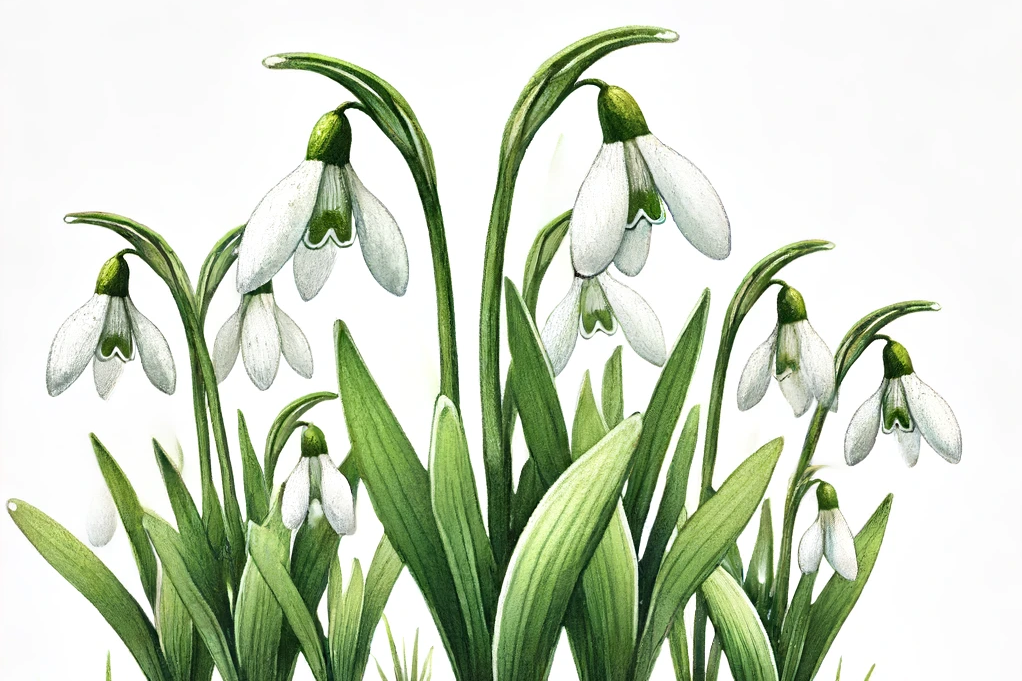Crocus

With the first hint of spring, the landscape begins to awaken and crocuses are among the first messengers announcing the approach of spring. These delicate flowers, known for their vibrant colors and early appearance, are a delight to the eye. But while they beautify gardens and parks, they pose unknown risks to our four-legged friends. In this article, we dive deep into the world of the crocus to understand what this plant is and explore the potential pros and cons of its presence in dog-related environments.
What is crocus?
Crocuses are small, perennial plants in the iris family (Iridaceae) that are known for their bright flowers that appear in a variety of colors, including purple, yellow and white. They bloom mainly in spring, although some species bloom in fall. Crocuses propagate from tubers and are popular with gardeners due to their adaptability and low maintenance requirements.
Benefits of crocus for dogs
Aesthetic enrichment
While crocuses offer no direct benefits to dogs, they enrich the environments in which dogs live and play. An aesthetically pleasing environment can indirectly affect the well-being of dogs by making people happier, thereby improving the quality of interactions with their pets.
Disadvantages and potential risks
Toxicity
Some crocus species, particularly the autumn crocus (Colchicum autumnale), contain colchicine, a substance that is highly toxic to dogs. Ingestion of parts of this plant can lead to serious health problems, including vomiting, diarrhea, seizures and even death.
Risk of confusion
The spring crocus species are less toxic than the fall crocus, but the similarity between the species can lead to confusion. Even the less poisonous crocus species can cause mild gastrointestinal problems in dogs if they are eaten in large quantities.
Danger from tubers
The tubers of the crocus can also pose a danger as they can be dug up and eaten by dogs. This can lead to choking hazards and the same toxic reactions as those caused by eating the plant parts.
Caution required
Crocuses are undoubtedly an asset to any garden, but their presence requires caution from dog owners. The potential risks that some crocus species pose to dogs cannot be ignored. It is important to be aware of the specific crocus species in your garden and take steps to prevent your dog from interacting with these plants. This may include making areas where crocuses grow inaccessible to dogs or avoiding the plants altogether if you have a curious four-legged friend. If in doubt or if poisoning is suspected, consult a vet immediately. While we appreciate the beauty that crocuses bring to our surroundings, it is our duty to ensure the safety of our furry family members.
If you notice any signs of hypersensitivity or poisoning in your dog, you should see your vet immediately. We are not a substitute for a vet, but we try to be as accurate as possible. Every dog reacts differently and we recommend you get a second opinion or consult your vet if in doubt.
Stay healthy and take good care of your four-legged friend!😊
Similar to Crocus
The emergence of snowdrops officially marks the beginning of the farewell to winter. These delicate plants breaking through the snow are not only a beautiful sight, but also an interesting topic when...
Daffodils contain various alkaloids that can be poisonous to dogs. These substances are mainly found in the bulbs, but also in the leaves, stems and flowers of the plant. If they are eaten or...
Tulips are a genus of plants from the lily family, which includes around 150 different species and various hybrids. They originate from Europe, Central Asia and North Africa and are now cultivated...
The hyacinth (Hyacinthus) is a genus of bulbous flowers belonging to the asparagus family (Asparagaceae). It blooms in spring and is particularly known for its dense inflorescences and intense,...



